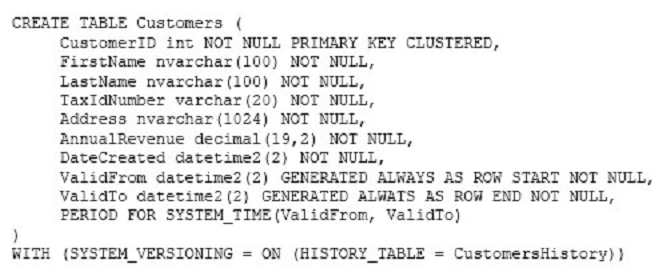

Note: This question is part of a series of questions that use the same or similar answer choices. An answer choice may be correct for more than one question in the series. Each question is independent of the other questions in this series. Information and details provided in a question apply only to that question.
You create a table by running the following Transact-SQL statement:
You are developing a report that displays customer information. The report must contain a grand total column.
You need to write a query that returns the data for the report.
Which Transact-SQL statement should you run?
A.
B.
C.
D.
E.
F.
G.
H.
exam_taker5
Highly Voted 5 years, 11 months agoTazul
5 years, 9 months agoRicky7876
Highly Voted 5 years, 1 month agotz_123
5 years agoBillybob0604
Most Recent 4 years, 5 months agoPHaringsNL
4 years, 5 months agoAndy7622
4 years, 6 months agoPHaringsNL
4 years, 7 months agoBacky
4 years, 9 months agoOooo
4 years, 9 months agodaniel_yes23
5 years, 2 months agoBahalzamon
5 years, 6 months agodragan
5 years, 9 months ago